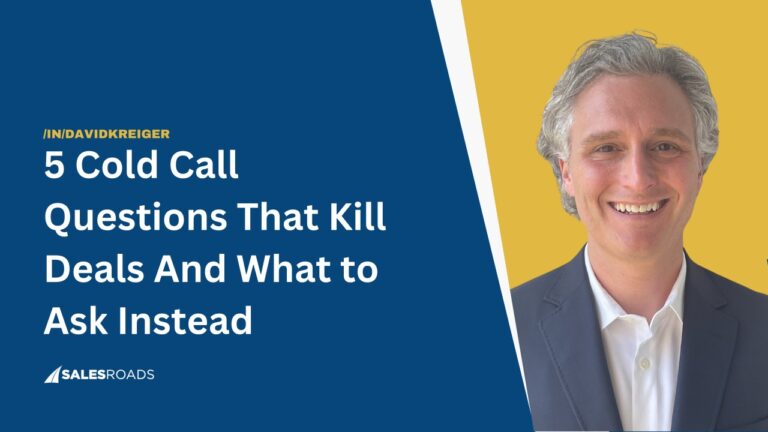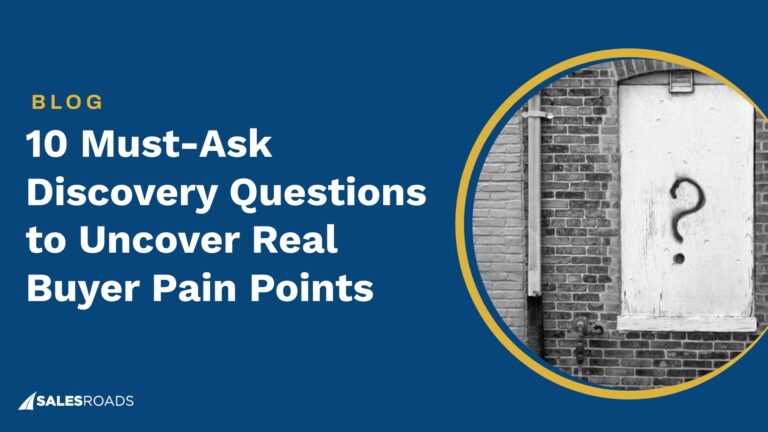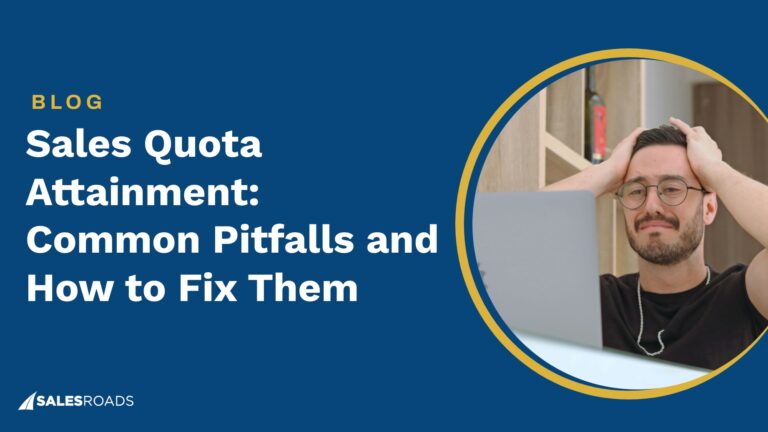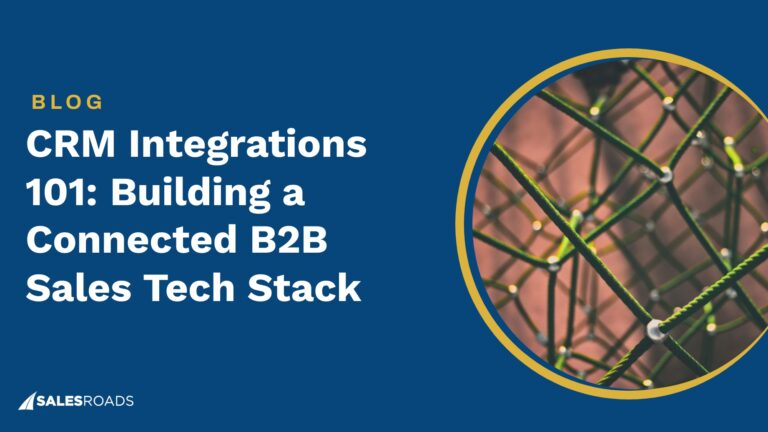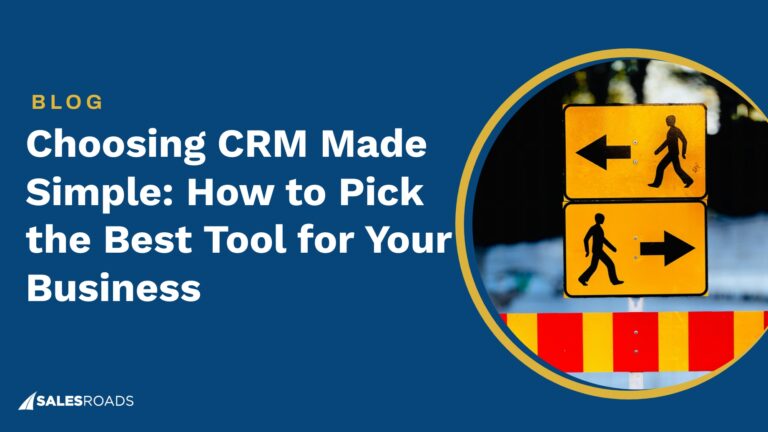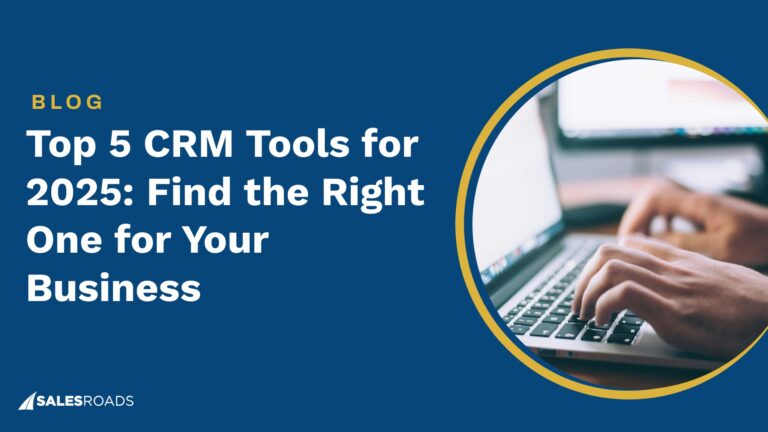Sell Like A Leader – Episode 27
In this episode, we dive into:
– AI integration in sales: Technology landscape, AI’s emerging role, changing buyer-seller dynamics, AI in customer interaction, future sales funnel impacts, human element in sales, competitive edge, and AI-driven GTM.
– Rapid fire Q&A
About Roee Hartuv
David Kreiger chats with Roee Hartuv, who heads the Revenue Architecture practice at Winning by Design. He’s a B2B startup executive with more than 20 years of experience working at high-growth SaaS companies.
Podcast Key Takeaways
- Roee discusses how AI will transform sales processes, particularly in go-to-market strategies for SaaS and B2B companies. He predicts that while the technology isn’t ready for broad implementation just yet, by 2026, businesses that have invested in AI will see significant benefits.
- The interaction between buyers and sellers is evolving, with buyers now coming to the table more informed than ever. Roee highlights that for less complex sales and smaller deal sizes, customers might prefer engaging with AI rather than human representatives.
- One of the primary areas where AI can provide immediate value is in automating repetitive, time-consuming tasks in the sales process.
- With the rising cost of acquiring new customers, AI presents an opportunity to make sales processes more efficient and cost-effective.
Connects
Connect with Roee Hartuv: https://www.linkedin.com/in/roeehartuv/
Connect with David Kreiger: https://www.linkedin.com/in/davidkreiger
Subscribe to the podcast and follow our Podcast LinkedIn page so you don’t miss any episodes!
Transcript
David: Welcome back to another episode of the Sell Like a Leader podcast. The podcast for revenue leaders who are on a mission to cultivate a high-performing sales team. I'm your host, David Kreiger, founder of SalesRoads, America's most trusted appointment setting and lead generation provider, and today I am bringing you an exciting revenue leader with some interesting thoughts around AI, and we're gonna dive into those today.
So, Roee is the head of the Revenue Architecture practice at Winning by Design. He works with SaaS companies, helping them to drive sustainable revenue growth. Roee is a B2B startup executive with more than 20 years of experience working at high-growth SaaS companies, and is just passionate about helping companies work towards better revenue, and really excited to hear about his perspective, how he coaches companies, and really how he coaches [00:01:00] them to use AI.
I think in a little bit of a different light than some people are saying today. So Roee, so excited to dive into this with you.
Roee: Yeah. Thanks for having me.
David: So, you've laid out that folks who really lay a foundation in 2025 with AI, it's gonna start to emerge. The fruits, I think, you know what you're saying, of that labor is gonna really emerge in 2026.
So it's gonna take a bit for people to really lay the right foundation, but we're gonna see the fruits of that foundation for those that really do make that investment over the course of this year. So, can you really unpack that for us and explain what that means?
Roee: Yeah, so the technology is everywhere, right? And a lot of different innovative companies out there are trying to tackle different elements—what we [00:02:00] call like the entire go-to-market, maybe strategy, or processes.
But each company is focusing on different areas, and we believe that the technology is going to mature in the next 12–18 months, and that will dramatically change how we operate within the go-to-market teams in SaaS or B2B companies.
David: And so if I'm understanding you correctly, we don't have the technology that is ready for primetime quite yet for as far as all the things that it can do. But we need to anticipate where it's gonna be. And you believe, your team believes that in 2026 it's really gonna be there.
And as a result, to really allow that to bear fruit, you've gotta set the foundation now.
Roee: We all, back into business school, there's like small intermediate steps, and then there's one technology that changes it all, like the iPhone, for example. I don't think that one technology will change it all.
Like we have these different companies addressing different challenges and pain points that we have within the go-to-market [00:03:00] ecosystem and it will slow— we will start to slowly see those improvements. So for example, and very relevant to what you guys do. Everybody talks about SDR outbound—is it dead, etc.
We see a lot of improvements through technologies and through AIs that will allow—I don't wanna say replace SDRs anytime soon—but really augment and add to the way that we currently are doing prospecting and targeting. For those of you who want, we just introduced a technology. You can play around with it on our website.
We're not a technology company. We're just playing around with different technologies. This is an inbound BDR, right? Like we have an avatar that is supposed to do the initial discovery steps of your sales process. And I gotta tell you, the results are fantastic. It's called Jack and you'll be amazed at the [00:04:00] level of conversation that this AI can have with you.
So yeah, it's these kinds of different technologies that all are addressing different needs. And yeah, in 2026, I believe that there will be enough technologies to change how we do go-to-market.
David: So I'm gonna wanna dive into some of those steps and things that you, where you see replacement. I wanna set the stage just even a little bit more though, 'cause I think you dive into the idea that the buyer-seller dynamic is changing, and I think we've seen it change for a long time where buyers come to the table with a lot more information.
There's all those facts about—they've basically taken the sale basically 70% of the way through the funnel, through the research. But you're seeing that even accelerate. Can you talk to us a little bit about that dynamic?
Roee: Yeah. So as you just said, we meet our prospects much more educated than we used to, and in a lot of cases, customers are much more mature than what we or the stages that we met them previously in [00:05:00] cases.
We as sellers, we need to adapt. Okay, where are they on that readiness to engage in a sales conversation?
And we believe—and again, that needs to be proved—but in a lot of cases, and especially the smaller ACV kind of sales motions, people would rather have a conversation with a robot and do that more transactional. Just give me the information. I know I already done my research. I want to try this out. I would rather, in a lot of cases, talk to an AI rather than a seller that asks me a question that is relevant to them and not to me. So that dynamic is shifting, that I believe would help us adopt more AI-type of technologies.
David: And so your feeling is that [00:06:00] people—it's not even just a less expensive way to deploy AI or get information in the hands of the buyer—you feel that, if I'm understanding you correctly, and correct me if I'm wrong, that you believe that, you know, buyers might prefer speaking to an AI.
Roee: In smaller ACVs—the less complex sales, yes. I believe that people just like POG, right? It's very aligned with POG. In a lot of cases, we can make buying decisions just by looking and doing our own research without talking to a human. I think AI will allow us to increase that in terms of ACV.
Okay, so if now I'm fine subscribing to a platform for a few hundred dollars without talking to a human, I think with an AI it will increase that to a few thousands of dollars. And again, the more the technology gets better, I believe the more confidence and trust we will have in that new way of buying software.
David: Yeah, I think that all [00:07:00] websites are gonna probably change, because where you can have people helping you—this is on the B2C side, but I think obviously it will translate to B2B—but I'll give B2C examples. With Amazon, for instance, if you're looking around and you could have a conversation, almost like with a salesperson, if you were in a retail store, about different products and things like that.
And those are just embedded in the experience. All of a sudden the shopping experience online has in some ways transformed. And that wasn't possible before.
And so now it is becoming possible.
And so almost the way that we imagine, the way we're looking at websites even—which didn't have that experience—the whole way that we're looking at things or guided through things, like instead of having just a landing page with a lot of products, you might really have a page with an AI where you start instead of a search with a conversation.
So it is interesting the way all these things are gonna translate through to the buyer experience.
Roee: [00:08:00] Yep, that's right. And another area—we haven't talked to—that we focused on, on the initial sales process: customer success. Can we replace a lot of the support—let's put that under customer success activities—under the AI?
We try to do that through automations. We all have the experience of dialing into a mobile provider and getting a very bad experience, but I'm pretty sure that with AI we can get better support. Now again, moving away from B2C, going into B2B, I think there's a lot of potential to augment support processes with replacing AI with humans.
David: So let's look at the whole cycle. So we've talked a little about customer support, we've talked—but let's look at holistically. So in the seller funnel, what areas do you see being replaced by AI? Is this all in 2026 or at what point, and how do you
[00:09:00] look at—is there a framework by which you look at whether something is prime for AI or prime for more human interaction?
Roee: Prime for AI is those repetitive seller-driven tasks. I believe that this is where AI will have a big impact. So can we find those areas that—yeah, for example, again, coming back to the sales process—a lot of research. We're currently doing a lot of research. We do that properly in order to sell. Let's replace that to an agent, like a research agent that creates all the information that we need.
So that's one area. But the way that we believe that—I believe that—will be driven is let's find those repetitive tasks. Let's find and prioritize the moments that matter across the customer, where AI can create a significant impact. And again, we won't change everything, we won't replace the [00:10:00] sellers overnight, but it will happen in specific areas and we will have small, focused sprints to train the AI on specific processes.
And again, those moments that matter. And continue to iterate and scale those areas and yeah, I think small areas until, yeah, I don't know how long it will take, but that's how I envision that happening.
David: It sounds like you're, you guys are automating some of the inbound lead qualification that a BDR would. Did you have any metrics around that? Like as far as qualification rate or close rate for the inbound side of things, or is it too new to, to really dive into that?
Roee: Yeah. I think it's too new, but I just wanna say we're a consulting agency. We're not a technological agency. So even Jack, the one that I talked about, we're testing it out. We don't necessarily—maybe will at some point—but we're not selling that. And we're testing it out [00:11:00] on our inbound.
I think the data set is too small to come with some recommendations or insights. I will say that the biggest advantage of having that, let's say again, inbound kind of agent—it's very easy to train them because, let's say, we took those 21st calls, we analyzed how it responded and then we upskilled it and told it, “Hey, this is what a good reply would've been here in this case.”
And it immediately implements that. And compare that to how much time do we need to upskill our SDR inbounds in order to answer inbound requests or conversations better. Yeah. It's immediate results.
And that's what really blew us—blew our mind, the way—because yeah, it's great to see how quickly you [00:12:00] can iterate and improve its capabilities.
David: With the coaching, it will take it—you gotta test it, it will iterate it, or it will take it in the way that you're asking. Whereas sometimes training a lot of folks, it can take a little bit of time for them to make sure that those skills are sticking.
So with that, talk a little bit about the scalability. Give us a little bit of an overview of how you look at it in terms of scalability.
Roee: Yeah, it's immediately scalable. You teach that module one time and then it doesn't matter—again, let's say the inbound. I think that's the easiest example for us to all understand. So that inbound agent—if I was dealing with humans, the more pipeline I have, the more people I need to have to manage those inbound leads.
With an AI, it automatically scales.
David: Yeah.
Roee: Let's talk about the cost behind that. Every [00:13:00] human that I need, right? I want to double my leads. Now I wanna bring in one or a few more people. AI is the same cost—maybe calculation cost—but basically it's the same cost. Now it's very consistent 'cause AI reduces the variability—the human errors—behind that. So I can have, if I build it correctly, more predictable outcomes.
David: Yeah.
Roee: And again, coming back to that instant adaptability that I mentioned, right? I can iterate quickly based on the responses that I get, and I can adjust much faster if, for example, market shifts, there's something happening in the market.
I release a new product feature, et cetera. It's very quick to adapt it or to iterate how it responds. And now think of how you would do that with humans. "All right, guys, something's happening. Our competitor just launched [00:14:00] this new feature, and we've launched that new feature."
David: Yeah.
Roee: Takes time.
AI—it’s immediate. So that effectiveness and scalability feature—I think if we can build the AI modules correctly—
David: And you can more effectively A/B test, 'cause you can control the variables much more, more easily
David: And so what do you think about with the AE role and doing discovery, building relationships—where does that fall in this whole cycle with AI and potential replacement?
Roee: Yeah, I don't think it will replace that. And the more—the higher you go with ACV—the more enterprise-level customers that you're dealing with, the more humans are important for that process. But again, we don't believe that AI will replace AEs immediately, but maybe they can replace doing demos. I don’t know—RFP responses. It's already happening, right? It's not [00:15:00] that dramatic.
But nowadays I'm working with customers, and for them to reply to an RFP, they have the AE, the sales engineer, the RFP team, the deal desk that is responsible for, and the legal—four or five different people just answering an RFP.
Again, taking the sales deck and features and plugging it into the format that the customer—the prospect—wants, right? There are tools out there that do this in a matter of minutes. So it's those efficiency gains that we will see in AI taking over more of those repetitive tasks. So not replacing the human relationship, but replacing those tasks that are time-consuming.
David: Yeah, that's a great use case for it. With RFPs, that's like built for—built for AI. Um, so going back to go-to-market too, and when ChatGPT first came out, I realized, oh my goodness, this is—in a matter of years, this could change everything.
And [00:16:00] so we've done a lot of research—actually partnered with a company—to do some inbound voice qualification calls and things like that. And it, to your point, it does work well. You've gotta still tweak some things, but it really—it is amazing how it can learn and you can coach it and things like that. On the outbound side, we you can't even use it just 'cause it's technically a robodial and things like that.
So there's some regulations that are put in place that will even limit the AI, but can you, sort of in the context of that or other things you're thinking about—what are, you've talked about research, and that makes perfect sense. Are there other aspects of go-to-market where you feel like things are just gonna change when people use AI in the right way?
Roee: Yeah, so research is the biggest part of that. And I am—the future that I envision is that you will have all the information in front of you, including—and I know 6sense, for example, are trying to do that. Clay, to some extent—the probability for them to buy and [00:17:00] engage, right? So you will have those types of models that will help you. But yeah, the human will get all the information in front of them.
Again, this is a no-brainer—already happening. What are the right messaging, the talking points that you need to come up with? And then it's just for you to press that dial and have thoughtful conversations with the right information for the right buyer at the right time. Yeah, again, think about that.
Eliminate—good outbound or prospecting targeting—70%, if you are focusing on doing quality and not quantity, 70% is based on the research: on how to engage, on what to write, how to respond, et cetera. Let's eliminate that, and you'll have—what—you will double or quadruple your time, effective time, that you can spend actually talking to your prospects.
David: I do think that there are definitely aspects, like you said, where [00:18:00] AI is going to do a better job. And I think there is a comfort level—I think some people are already comfortable.
I mean, one of the calls that I heard on, somebody said, “You sound like an AI. Are you an AI?” And they said, “Yeah, we're an AI.” And it's “Oh, okay, cool,” and continued the conversation, right? And then there are other people who are like, “I wanna talk to a human.”
And then you have to just have that off-ramp. But especially, because I think customer service is gonna probably be replaced much—pretty quickly. Because the experience in customer service is already so bad. And as people start speaking to AI more and more, maybe the comfort level will also become more and more.
So any boundary that there is—or barrier—there will probably come down. But there are things that I think are uniquely human. And there's reasons why people buy from people—for rational reasons, because they trust them. They’ve built trust over years. And irrational reasons—because they went to the same school, or grew up in the same town, which shouldn't necessarily make a difference, but it does.
So that's human psychology, and I feel like AI will never [00:19:00] completely replace that. And so the framework you have where low ACV makes sense, and then the bigger things—even if AI, because of perfect information or things like that, can sell better—I don't think AI can ever create a true relationship.
I don't know, that might get challenged a little bit. But a relationship in the way that really feels human and from a connected level.
And so I do think it is interesting the way you're looking at it and trying to pinpoint different aspects of the journey.
And so to that end, as sales leaders are thinking about where they deploy AI or where they set the table in 2025 to be ready for 2026, I know you've touched on this throughout our conversation, but I'd love for you just to give some just über points—if you're a sales leader—how you would look at your go-to-market and where you would think about deploying AI and starting that research now, and what that research looks like so that they're prepared for 2026.
Roee: Again, look at that repetitive seller time-consuming tasks. And probably somebody's [00:20:00] already developing a solution to replace that with AI. And that's basically it. You probably will have different, we call them moments that matter, but different activities that happen across the customer journey. Map them out, understand where, okay, we're getting stuck at RFPs because—yeah, that's our industry.
And what I'm hearing from my AEs, it takes 40% of their time just to reply to RFPs. Is there a solution out there? So do this across the entire customer journey, from the BDR to the sellers to the Cs, and see where you can replace those tasks.
But one thing, David, we have to look for an AI solution. It's not a matter of "yeah, let's wait for the storm." It's already happening. First of all, our cost of acquisitions have doubled. Like when you look at, [00:21:00] again, where data is available—public SaaS companies—the cost of acquisition across the board has almost doubled for, and these are the most successful companies.
We can no longer continue to acquire customers—new customers—at the same expense or cost that we have right now. We need to find efficiencies. And humans are expensive, and they're slower to scale. They're slower to ramp. They're slower to change.
We have to find those solutions. And AI is exactly that technology that will help us transition and help us become more effective, more productive, and hopefully less expensive in terms of acquisition and customer service. And I think there's a first-mover kind of advantage, and companies that will [00:22:00] adapt and find the right solutions will be able to grow faster.
David: I think that's something for people to take to heart. They've got to look at their process. I love the idea of mapping out their current go-to-market process and seeing where AI can augment it. And like you said, some of the low-hanging fruit right now, that can be done.
I don't even think they have to wait till 2026—is the research portion. But really make sure that you are looking at it strategically as a leader. Because also, it's a muscle, right? We're all getting used to this, right? We all need to understand how this works, and then as you're working, things are gonna come up, and you're gonna have ideas.
But we just have to lean into this technology, understand what works, experiment. Things are not gonna work. Things—and we'll tweak maybe because we're not ready yet, like you said, with the technology, or maybe it's not the right use case. And we're gonna understand how humans interact with AI and where they like to and where they don't, as we move along.
But you gotta try, you gotta lean into it. Otherwise, somebody else is. And like you said, be [00:23:00] left behind. Now we've gotten to the last part of our session. Are you ready?
Roee: Yeah, let’s do it.
David: All right. So what is the one thing people don't give enough value or attention to in leadership?
Roee: Coaching and focusing on your teams. When we're talking about sales leaders, what we see a lot is that they spend their time supporting and chasing the numbers and chasing the customers, but they do not give enough of their time and enough attention to focus on upskilling their teams.
David: So many people don't make the time for it.
And favorite quote, mantra, saying that inspires you as a sales leader?
Roee: I would go with "Sales is not an art, it's a science." When I started to do sales, my mentor she was a natural salesperson. Being an introvert myself, it was hard for me to, unlike her, go into a room and [00:24:00] captivate the C-level audience and whiteboard naturally, whatever comes to mind, whatever the topic is.
And I always had to find scientific processes—preparation, talking points. And I believe that sales is a science more than it is an art. And of course, there are people that it comes natural to them. Not for most of us, I would say.
David: That's awesome. And as an introverted seller as well, I can relate. What is the most important goal or project you're working on right now?
Roee: I'm working with a company right now, and the biggest opportunity, I should say—during COVID, they were selling like crazy. Their growth rate was high. They were basically order-taking because they have a technology that fits well with remote working. And yeah, they basically grew like crazy.
But now COVID is over, and we're back to the previous [00:25:00] growth rates, and that is really some friction for that specific customer. And now we're trying to build and fix that. And that fix—which is, I would say, 60% of the time—is focusing on the frontline managers. They are our ambassadors of change. Focusing on upskilling the frontline managers allows us to upskill the entire organization. That’s the project I'm working on.
David: Frontline managers are so important. I think they're overlooked a lot of times, but they're the ones who make the magic happen. So that sounds amazing.
Roee: Yeah.
David: This was awesome. I think it's always interesting having people come with different perspectives. I know on LinkedIn people really try to sugarcoat some of the AI transition. And I love how you're bringing your own unfiltered view to that, which
I think is important as we really think through a very fast-changing technology that does have the potential to really change a lot of norms. If people are [00:26:00] interested in learning more about you, connecting, learning about Winning by Design, how do they reach out or research you?
Roee: LinkedIn is the best, right? So reach out to me on LinkedIn if you want to learn more about the AI agent that we're playing around with and any other frameworks and methodologies. Winningbydesign.com—that’s our website.
So check it out.
David: That's fantastic. Thanks again. This was a great conversation. And thanks everyone for tuning in here. If you ever wanna reach out to me, I’m always active on LinkedIn.
Love to hear from you—perspectives on the show, different folks you'd love to hear from. But until next time, happy selling.


